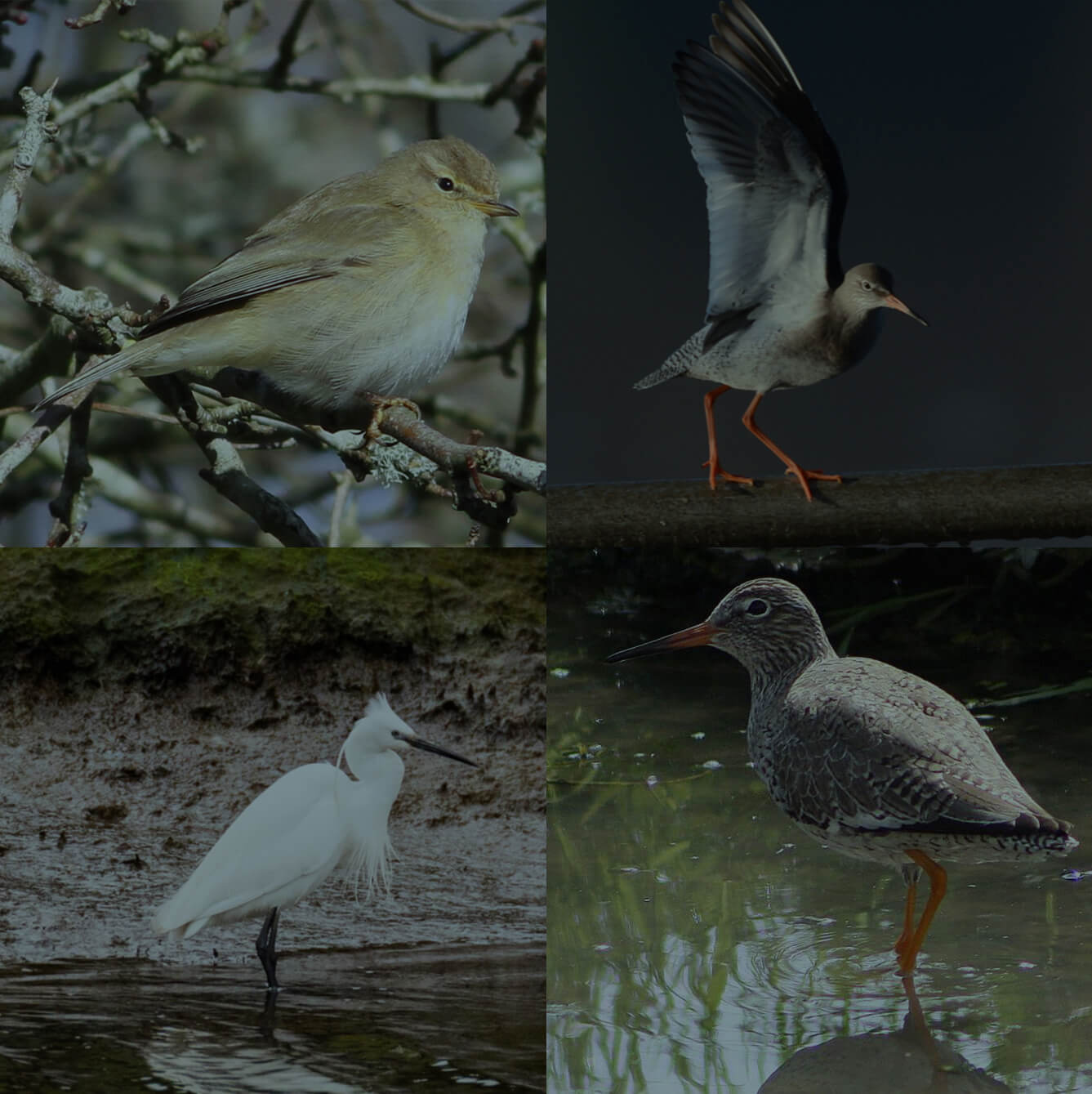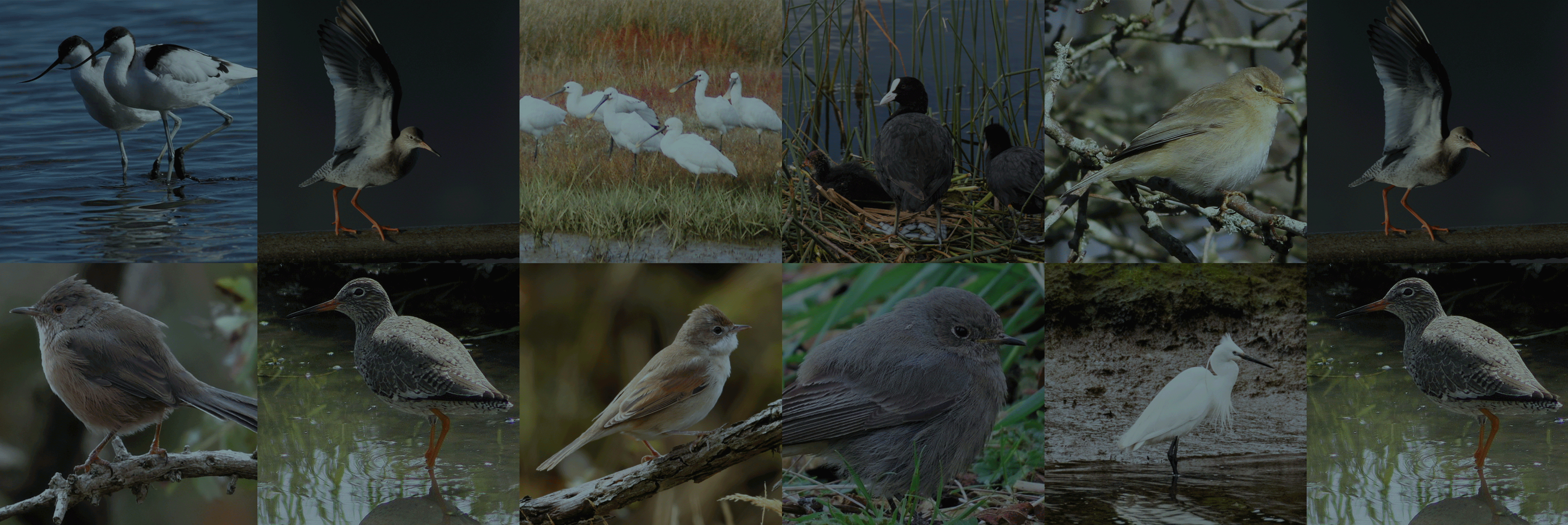An official account of all species that have been recorded and reported by birdwatchers and naturalists in the Poole Harbour area since records began.
The data for this list has been extracted from various sources, but George Greens 'The Birds of Dorset', Mansel-Pleydell's Birds of Dorsetshire, Naylor’s reference manual of rare birds and the back catalogue of Dorset bird reports have provided most information. Data is currently still being researched and records will be updated accordingly.
You can view this information in two different ways. Our alphabetical list provides information on the status of each species within the harbour, finder dates and names, photos and favoured locations. By clicking on the Systematic List button you will be presented the full Poole Harbour systematic list which includes status of species, pending records and historical accounts.
To date, 333 species have occurred and have been accepted within the Birds of Poole Harbour boundaries. A further 11 distinct subspecies have also been seen. In addition, we have two species/subspecies which have been recorded, but are awaiting acceptance by the appropriate records panel.
There are a handful of historical records, for which there is currently insufficient information to allow their inclusion onto the Poole Harbour list, but are believed to be genuine records. They are listed at the end of the list.
Finally, there are a number of feral or escaped species that have been recorded within the Birds of Poole Harbour boundaries. They are included for completeness, but are not included on the Poole Harbour list.
We would be interested in hearing details of any species that do not appeared on this list.
The Birds of Poole Harbour systematic list is a PDF which you can view by clicking on the button below. It was last updated on December 2019.
Full Poole Harbour Systematic List
Water Pipit
Latin Name
Anthus spinoletta
Status
Passage Migrant & Winter Visitor
Site And Records Information
Lytchett Fields is by far the best site to try for Water Pipit, any time from October to March. Participation in a nationwide colour-ringing project saw 11 new Water Pipit ringed at Lytchett Fields during the winters of 2020/21 and 2021/22. A 1cy bird ringed ‘1K’ in 2020 returned in 2021 which is the first confirmation of winter site fidelity of Water Pipit in the UK.
The Wytch Causeway is another reliable site, but it’s worth checking any wet marshy fields, with open pools during the winter. A maximum of 50 on Wareham Water Meadow on the 9th December 1984 is a very high count. Typically sightings these days refer to just 1 or 2 individuals.
Recent records
2023
Holton Lee – 1 on 24th Mar.
Lytchett Fields RSPB – Present to 26th Mar, max of 4 on three dates from 13th Feb to 2nd Mar.
Upton CP – 1 on 19th Jan.
Arne RSPB – 1 on 11th Nov.
Lytchett Fields RSPB – Present from 20th Oct, max of 3 on three dates from 7th to 14th Nov.
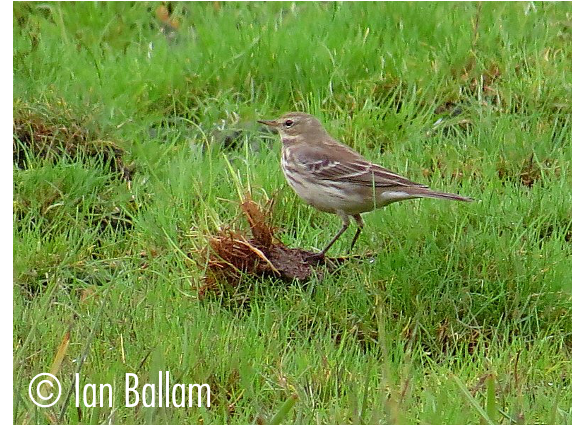
Water Rail
Latin Name
Rallus aquaticus
Status
Resident
Site And Records Information
A tricky bird to see due to it’s shy nature, but recent surveys proved that there were many more breeding pairs than first thought. It was discovered that 211 pairs were known to breed within Poole Harbour and not just 12 as first predicted by the RBBC. Patience is a virtue and sitting and watching the edge of any reed bed around the harbour could eventually produce Water Rail. Best located by familiarising yourself with their call. However, the best time to see them in the open is during freezing weather. Lytchett Fields, Sunnyside Pools, Swineham and Brownsea are all good places to try and see Water Rail.
The harbour maximum is of 28 birds seen together (including fledged young) in Lytchett Bay in 1996.
Birds of Dorset state “notable counts included up to 50 around Little Sea in winter 1987, at least 30 at Lytchett Bay in autumn 1984” In 1991, Studland Warden Rees Cox estimated a winter population for Studland of between 50 and 80 birds, if this is correct birds wintering in the harbour may number between 200 & 1000.
New evidence is also emerging through nocturnal migration recordings that Water Rail are very regular and vocal nocturnal migrants across the harbour. Numerous night recording stations have picked up the calls of migrating/dispersing Water Rail above habitats you’d never expect to see one including the tip of Ballard Down and Poole Town Centre!
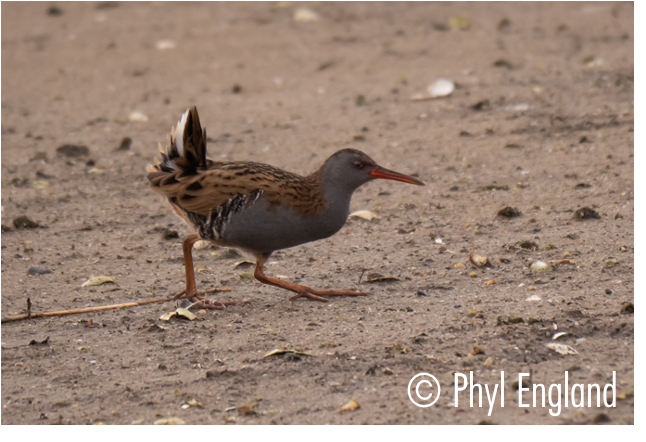
Waxwing
Latin Name
Bombycilla garrulus
Status
Scarce Winter Visitor
Site And Records Information
It seems every 4-5 years the UK gets large irruptions on Waxwing which coincides with Poole Harbour sightings. Within the boundaries the Poole Sainsbury’s car park was a real hit with 100 birds feeding on the Rowan in winter of 2010/11. Lytchett Bay, Upton and Hamworthy all recorded birds. Broadstone, Canford Heath and Parkstone seem to be favoured feeding zones with a whopping 460 at Canford Heath on the 24th January 2004.
Recent Records
2016
East Holme 1 on 29th Oct.
2017
Broadstone 4 between 11th-16th Mar, perhaps the Corfe Mullen flock. Canford Heath 1 on 16th Jan.
Canford Bottom/Magna 3 on 2nd Mar, perhaps the same birds at both places.
Poole Up to 9 on 9th & 10th Feb, mainly in the Ringwood Road area; then 4 on 11th Mar.
2019
Wareham 5 at Carey Road, Northport, on 30th & 31st Jan.
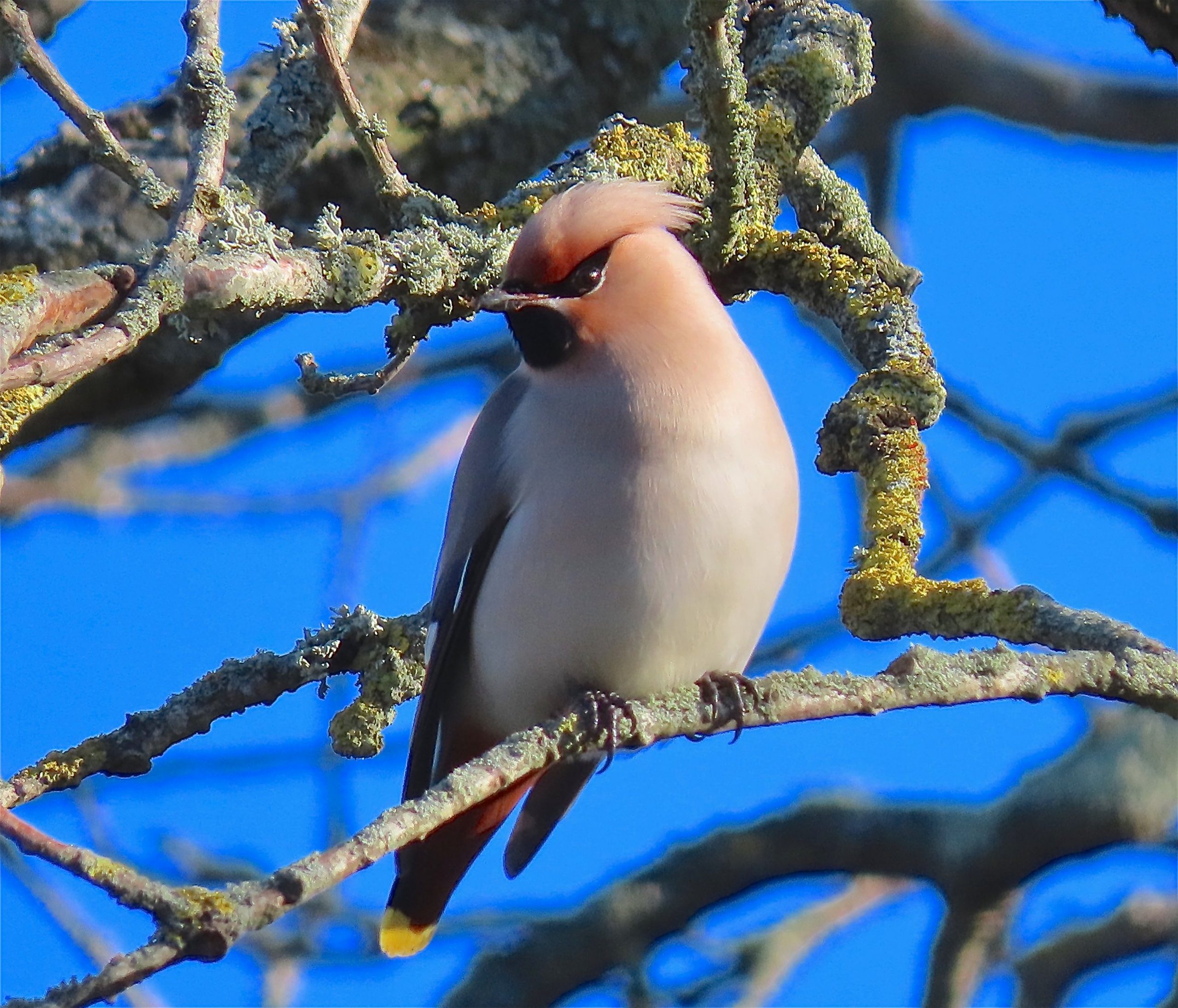
Western Sandpiper
Latin Name
Calidris mauri
Status
Vagrant
Site And Records Information
1 from 28th September to 15th October 2004 on the Brownsea Lagoon. This was the 10th British record and was enjoyed by over 1500 happy bird watchers making both the island and the ferry companies a healthy profit at an otherwise quiet time of year.
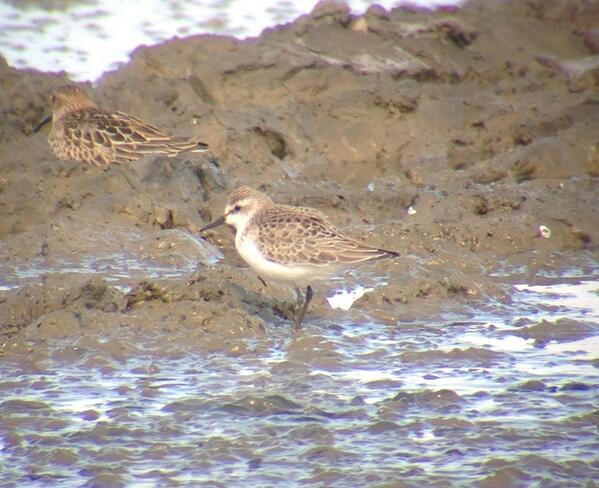
Wheatear
Latin Name
Oenanthe oenanthe
Status
Summer Visitor & Passage Migrant
Site And Records Information
Arrives from mid March onwards and can pass through on a broad front across the harbour meaning they can turn up anywhere. Falls of 10+ birds can occur at Arne, Lytchett Bay, Ballard Down, Studland, Sunnyside, Bestwall and other sites. Autumn passage is strong too with most places hosting Wheatear at some point. Breeding has occurred up on Hartland Moor twice in the last three years. Also recorded in Poole Harbour each spring and autumn is the sub-species Greenland Wheatear
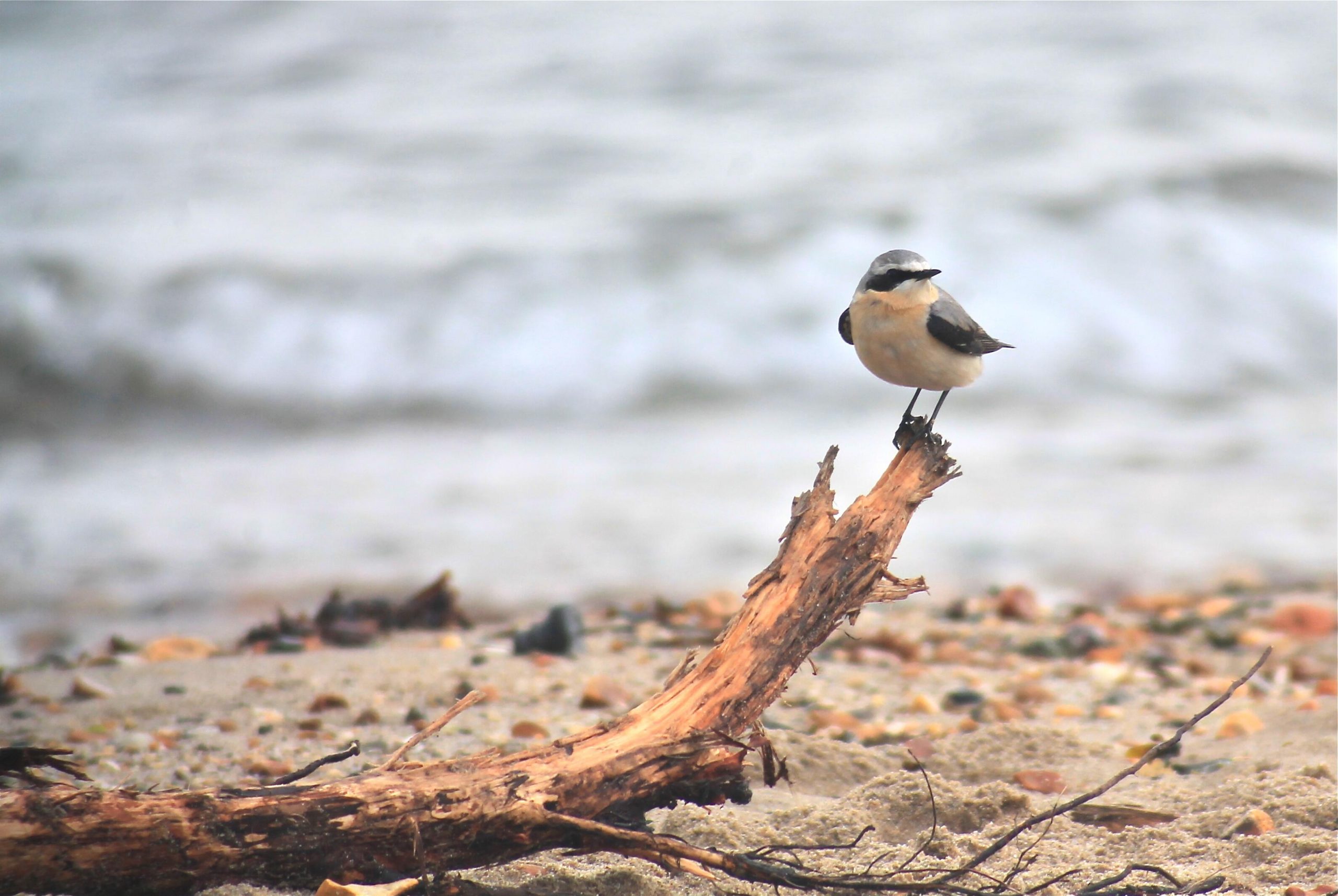
Whimbrel
Latin Name
Numenius phaeopus
Status
Passage Migrant & Scarce Winter Visitor
Site And Records Information
Large flocks of Whimbrel used to stop off in certain parts of the harbour with counts of up to 200 being quite common out on Wareham Moors. Birds now filter through in much smaller numbers on their way north with Holes Bay, Lytchett Bay, Brands Bay and Arne occasionally reaching double figures. Autumn passage is good too with birds passing through the same sites from late July and all the way through August. In the spring, the calls of Whimbrel can be heard during the dead of night as they migrate overhead as they head north and south.
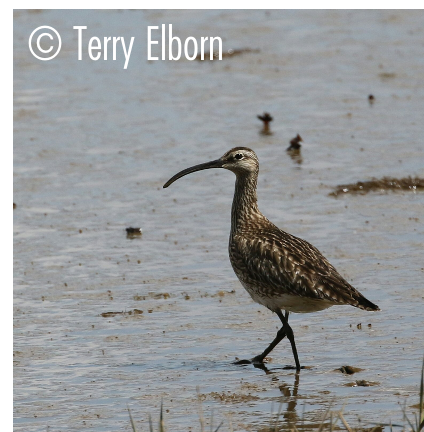
Whinchat
Latin Name
Saxicola rubetra
Status
Passage Migrant
Site And Records Information
Only recorded on passage from April through to September. Ballard Down, Hartland Moor and Lytchett Fields in September are hotspots, with other regular sightings at Greenlands Farm, Studland, Arne, Sunnyside Farm and Lytchett Bay but could potentially turn up at any rough scrub/heathland habitat during peak migration times. Spring sightings are scarcer but breeding plumaged males are always a joy to find on a warm April day.
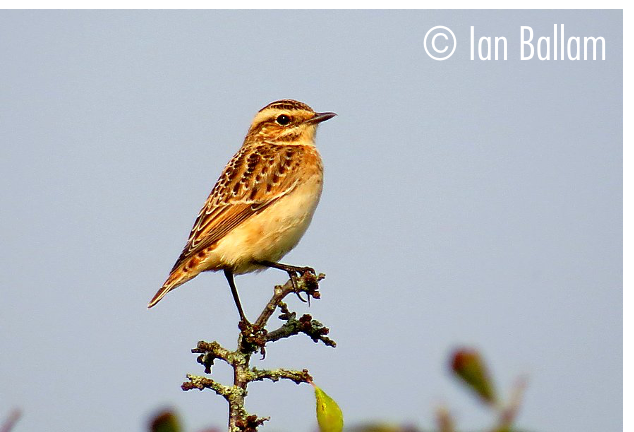
Whiskered Tern
Latin Name
Chlidonias hybrida
Status
Vagrant
Site And Records Information
1 on 10th April 2011 at Swineham GP. This was the first Poole Harbour record and arrived on the same day as Woodchat Shrike in Lytchett Bay. Also in the county that day Red-rumped Swallow and Short-toed Lark at Portland showing a decent fall of scarce migrants.
White Stork
Latin Name
Ciconia ciconia
Status
Rare Visitor
Site And Records Information
To date there have been 13 Poole Harbour records, almost all of which have occurred in the Frome Valley. The open, vast areas of Bestwall, Arne Moors and Swineham provide excellent habitat for White Stork. Now with ‘wild breeding’ occurring at the Knepp Estate further along the South Coast, will this handsome and obvious bird become an annual visitor to the harbour?
2 on the 2nd April 1884 around Arne
1 seen near Ridge from 22nd to 27th April 1976.
1 flew over Arne towards Wareham meadows on the 28th April 1984.
2 flew over Godlingston Heath towards Arne on 1st May 1993.
1 spent most of the day at Bestwall on 21st June 2001 but was sadly only enjoyed by a select small group of birders due to the Foot and Mouth restrictions
1 over Bestwall 12th July 2008
1 on Arne Moors 13th April 2010
1 on Wareham Water Meadows September 25th – October 4th 2010
1 over Stoborough heading west – May 1st 2018 (N.Hopper)
1 on Sept 6th – 13th 2019 on the Sunnyside Scrape. A ringed individual from the Knepp reintroduction project (J.Mitchell et al)
1 on April 10th 2020 heading up Piddle Valley (J.Parker). Logged again on April 15th 2020 in Frome Valley
36 over Brands Bay and Ballard (multiple observers) 16th Sept 2021. A migrating flock heading south as a result of the Knepp White Stork reintroduction.
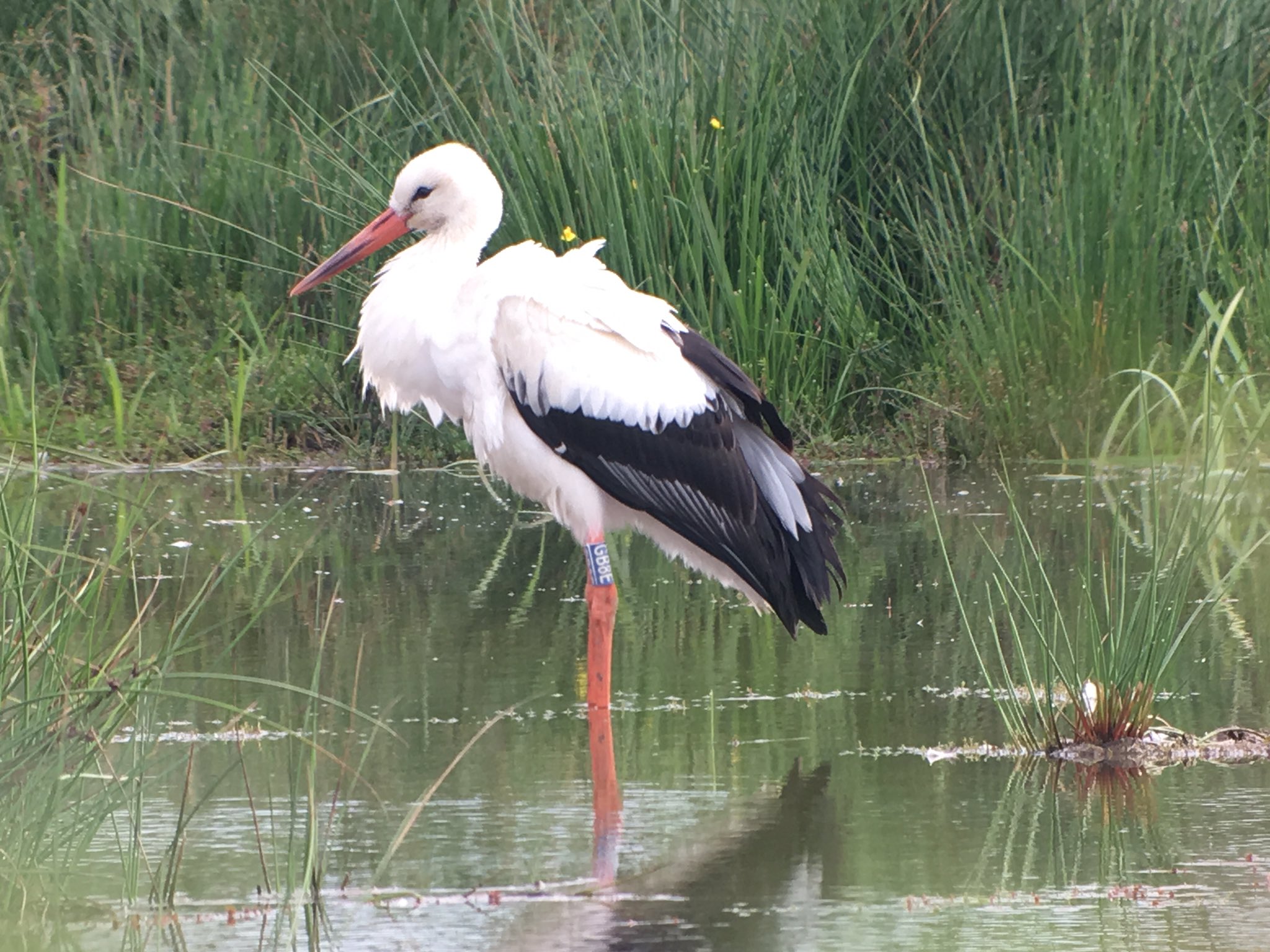
White Wagtail
Latin Name
Motacilla alba alba
Status
Passage Migrant
Site And Records Information
Probably under recorded but passage is evident in spring and winter with birds recorded at South Haven, Godlingston, Arne, Wareham Water Meadows, Lytchett Bay, Upton Country Park and Ballard.
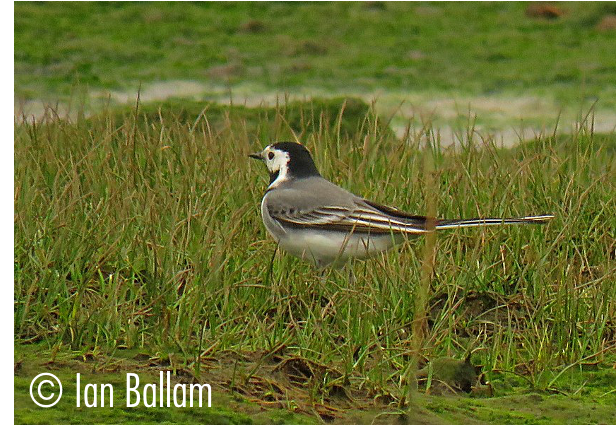
White-fronted Goose
Latin Name
Anser albifrons
Status
Scarce Winter Visitor
Site And Records Information
They used to nearly be annual but numbers vary with the weather and with warmer winters, are becoming much scarcer. During periods of cold weather the best places to look are Bestwall, Arne, Middlebere, Swineham and the Frome Valley. Birds normally arrive in late December or early January the earliest record is of six NW over Studland on 14th October 1992. Previous counts have included the harbour maximum of c.300 in Poole Harbour on 12th February 1963. 200 in Poole Harbour in the winter of 1979 at Bestwall. Arne saw 250+ on January 4th 1981 and 225+ on 17th January 1982. In mild winters sometimes the only records has been of injured birds with one at Lytchett Bay staying until 15th June 1997 when it moved to Arne and stayed to 29th June 1997.
Most recent records.
2 on 16th February at Swineham GP
1 on 22nd October 2010 at Baiter
19 on 10th January 2011 at Bestwall with numbers dropping to 6 by the 18th of January
6 on 19th November 2018 west along Middlebere (D.Lister)
1 on NW corner of Arne Moors Dec – Jan 2018/19 (P.Morton et al)
2 Brand’s Bay on 26th Nov 2016.
3 on 19th Nov, 1 on 9th & 11th Dec 2018 Arne RSPB
1 juv from 8th to 31st Dec at Swineham GPs . Also seen at Arne Moors RSPB, Bestwall RSPB and on the meadows between Stoborough and Wareham.
Swineham GPs The juv from 2018 stayed into 2019 acquiring adult plumage. It was last seen on 29th Nov, occasionally also visiting Arne Moors RSPB and Bestwall RSPB.
2 flew through the harbour entrance and then landed briefly at Holes Bay on 7th Jan 2021.
5 flew over Lytchett Bay on Jan 31st 2021
1 on Brownsea Lagoon 19th Feb 2021
White-rumped Sandpiper
Latin Name
Calidris fuscicollis
Status
Vagrant
Site And Records Information
Strangely one of the rarest North American sandpipers to occur in Poole Harbour with only one record, even though White-rumped Sandpiper is actually one of the most frequently encountered nationally only just behind Pectoral, Buff-breasted and Semipalmated Sandpiper. Like many other ‘Poole Harbour firsts’ Brownsea Island was the location for the harbours first White-rumped Sandpiper.
Just one record of 1 on 22nd-24th August 2007 on the Brownsea Lagoon (G.Armstrong and I.Prophet)
White-tailed Eagle
Latin Name
Haliaeetus albicilla
Status
Vagrant
Site And Records Information
Well, what does the future hold for this species in Poole Harbour now that there’s a reintroduction scheme taking place just across the water on the Isle of Wight?!
Historic records of this species involve a pair that frequented the Rempston Woods in 1860, one of which was trapped there by the gamekeeper and the other which was shot at Lulworth soon afterwards.
Recently, a sighting of a large eagle species in 2008 over Hartland Moor was thought to be a White-tailed Sea Eagle but sadly couldn’t be confirmed.
However, with Isle of Wight reintroduction now underway (summer 2019), and a planned 60 birds to be released, it’s hoped/assumed that sightings and perhaps even breeding attempts will become a regular occurrence over the next 10-20 years. On April 15th 2020, the first appearance of one of the ‘project birds’ from the IOW appeared in the harbour but ironically wasn’t seen by anyone (despite it’s colossal size) with it’s presence only known due to the sat-tag data it transmitted later that day showing its route as it traveled over Sandbanks, Brownsea, up Middlebere, over Ridge and then west all the way down to Exeter.
In 2022 White-tailed Eagles from the IOW project are now regular with several semi-resident and plenty more transiting through as they move their way to other areas. The Wareham Channel and around the Arne peninsular seem to be current favoured areas along with occasional visits to the Brownsea Lagoon to cause havoc.
In 2023 a pair established a territory in the west of the harbour, with G466 (female) and G463 (male) first meeting in late February of that year. During the spring and summer of 2023 they developed their bond and spent the summer establishing their territory together. It’s hoped that they may attempt to breed in 2024.
White-winged Black Tern
Latin Name
Chlidonias leucopterus
Status
Vagrant
Site And Records Information
The first Poole Harbour record was in 1964 with no records then for 40 years. Then there were three in three years 2013,14 and 15. The best places to check are Swineham GP but also in amongst feeding tern flocks off the southern Brownsea shoreline on a running tide, also on the Brownsea Lagoon.
1 on the 3rd June 1964 on Brownsea Island
1 1st-winter on 15th – 16th September 2013 at Swineham GP (MJ Lawson, P Moore et al)
1 juv on 10th – 11th September 2014 off Brownsea watched from the House Boats (G Armstrong et al), relocated at Swineham GP that evening (A Brown et al) and was present early the next morning only
1 2cy from 2nd-4th June 2015 at Swineham GP in near full breeding plumage (I Alexander et al)
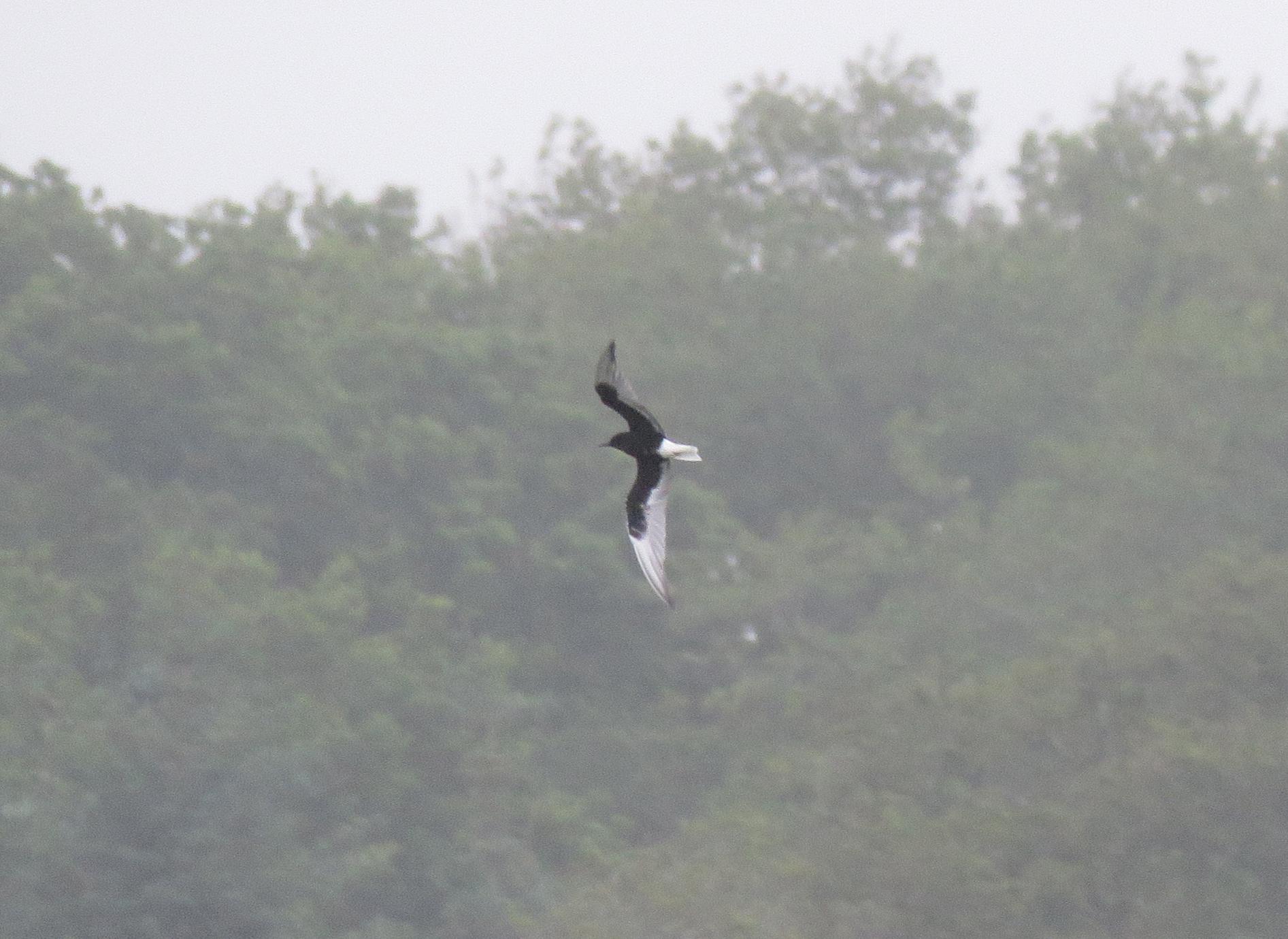
Whitethroat
Latin Name
Sylvia communis
Status
Summer Visitor & Passage Migrant
Site And Records Information
Regularly seen in large hedgerows from late April to early May but breeding sites are in much decline. On passage Ballard, Arne, Lytchett Bay, Studland, Lytchett Heath and Middlebere are good with birds breeding at Upton Country Park, Ballard and Studland. Autumn passage can be strong, so anywhere with suitable rough scrubland should host birds throughout August and September
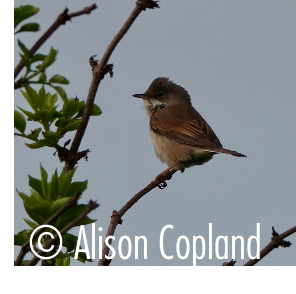
Whooper Swan
Latin Name
Cygnus cygnus
Status
Scarce Winter Visitor
Site And Records Information
Whooper Swans in Britain normally come from Iceland and these birds occasionally get blown off course over the sea ending up too far south and may then make there their way along the Dorset coast or up the valleys through the harbour. The few ringing recoveries in southern England however indicate that these birds are from Finland.
In the 1960s regularly reported over-wintering at Little Sea, however since then weather conditions have to be extreme before this bird becomes easy to see in the harbour.
The maximum was “a herd of c64 visited the harbour” during the big freeze on 19th January 1963.
A.J.Bull wrote of this great run of records in the 1964 Bird report; On 27th November 2 flew west from Brands Bay. During the latter half of December several were seen on Little Sea including 4 on the 19th. 8 others were seen flying into Poole Harbour: 6 including one juvenile on December 20th and one on December 27th”.
In 1962 one to three were reported in January then in 1963 “there were ten Whoopers regularly in January and on the 19th of the month a herd of 54 visited the harbour (Helen Brotherton). For some time in February two or three were to be seen close to the main Sandbanks Road at Shore Road”
A rather odd record of a bird found on 9th March 1960 at Poole Park which stayed 13 months until 8th April 1961
After that visits became more prosaic with two in Poole Harbour on the Holton Heath Shore on 14th December 1967 seen by Dr Godfrey. Next were “A skein of forty flying over Brownsea in March 1980” seen by Tony Wise.
The three most recent visits represent some sort of passage through the harbour with two birds on Brownsea on 4th November 1994, on the 28th October 1997 (the earliest of dates), two Swans were seen to fly out of the harbour “whooping”, on 31st October 1999.
Recent Records
2014
31st October – Middlebere – 4 (1 ad & 3 juv)
2016
20th Oct – Lytchett Bay 1 ad (ID Ballam, IM Lewis).
13th Nov Middlebere 1 ad (D Allison).
2017
5th Oct – Lytchett Bay 3 ads (ID Ballam et al).
2018
19th Oct – Lytchett Bay 2 West (S Robson).
2022
8th Oct – One through harbour entrance at dawn and later seen at Middlebere (G.Armstrong and M.Wright)
2023
1 on 2nd Mar, Swineham GP then flew out into the Wareham Channel (Adam Day, Garry Hayman).
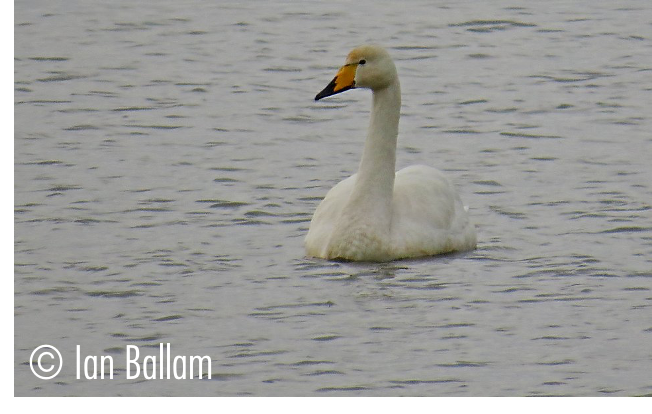
Wigeon
Latin Name
Anas penelope
Status
Winter Visitor
Site And Records Information
A winter visitor from Scandinavia and Russia, many birds pass through on their way further south. They are found in Brands Bay, Ower Bay, Newton Bay, Middlebere, Lytchett Bay, Holes Bay and off Holton Heath and occasionally, if flooding and weather encourages it, the Frome Valley and East Stoke.
Wigeon were traditionally hunted in the harbour as Alan Bromby points out; “For many generations these were the chief quarry of the wildfowlers of Poole and played an important part in the local economy…… ”. Numbers must have been between 2000 and 4000 birds before 1930. As with Black-tailed Godwit the Avon valley is “twinned” with Poole Harbour for Wigeon and the circumstances on the river there have a big influence on numbers here, as will circumstances on the Fleet. They are still a quarry species within the harbour.
During the last sixty years Wigeon numbers have climbed considerably and with winter totals between 3000-4500 with an exceptional count of 7604 at Little Sea and in the Wareham channel on 3rd January 1982. The earliest was on 16th August 1969 and the latest on 8th April 1969.
Their far carrying whistle is one of the most recognisable sounds of the winter here in the harbour, with the cycle path in the NE corner of Holes Bay being the best site to see and hear them, as they’re often just yards from the path it’s self.
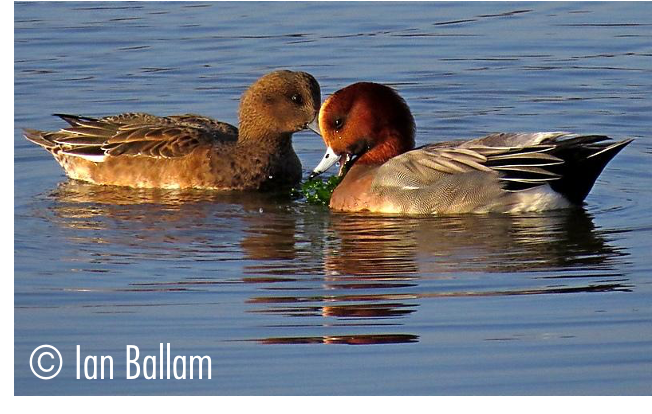
Willow Tit
Latin Name
Poecile montana
Status
Former Resident, now Rare Visitor
Site And Records Information
Mainly identifiable by it’s song, this almost identical relation to the Marsh Tit is now considered extinct in Dorset. The boggy areas around South Haven and Little Sea were particularly favoured where they could potentially be seen in the mixed Tit flocks that roam the area. Below are examples of (semi)recent sightings.
1 singing on 21st April 1977 at 12 Acre Wood
1 on 8th & 15th February 1998 at Lytchett Bay
1 on 11th February 1998 on the Arne feeders
1 on 2nd May 1998 at Slepe Copse
1 singing on 8th April 2000 at Corfe Castle
Any claims of Willow Tit in Poole Harbour and Dorset are extremely important. A sighting must be submitted to Dorset Bird Club with a written description, ideally a photo and even better a sound recording.
Willow Warbler
Latin Name
Phylloscopus trochilus
Status
Summer Visitor & Passage Migrant
Site And Records Information
More easily found on spring and autumn migration when large numbers pass through the harbour. Ballard Down, Arne, Sunnyside Farm, Studland, Middlebere and Lytchett Bay are all regular feeding areas. Singing males can be heard from April onwards but nowadays very few pairs stay and breed. Breeding totals were far greater 20-30 years ago with 30-40 pairs at Arne alone in the 70’s. Singing males have most recently been encountered along Soldiers Road, Arne and at Hartland.
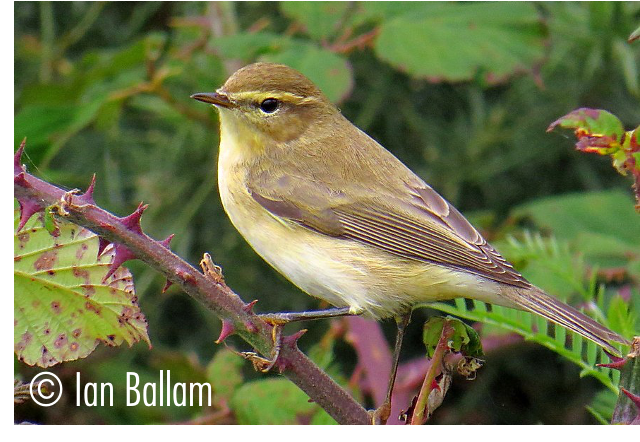
Wilson’s Phalarope
Latin Name
Phalaropus tricolor
Status
Vagrant
Site And Records Information
1 on 20th June 1988 in Holes Bay. Discovered by a surveyor who was monitoring Redshank numbers in preparation for the new Holes Bay bridge.
Wood Sandpiper
Latin Name
Tringa glareola
Status
Passage Migrant
Site And Records Information
Wood Sandpiper used to be quite hard to catch up with in Poole Harbour. Birds used to appear in the past at sites Lytchett Bay, Sunnyside Farm, Brownsea Lagoon, Swineham and Bestwall. They usually start to pass through from mid August and can be observed through September. However with the creation of Lytchett Fields, Holton Pools and Sunnyside Pools sightings are now far more frequent with Lytchett Fields seeing several per autumn. Spring passage is much weaker, but again, Lytchett Fields has seen several recent spring records.
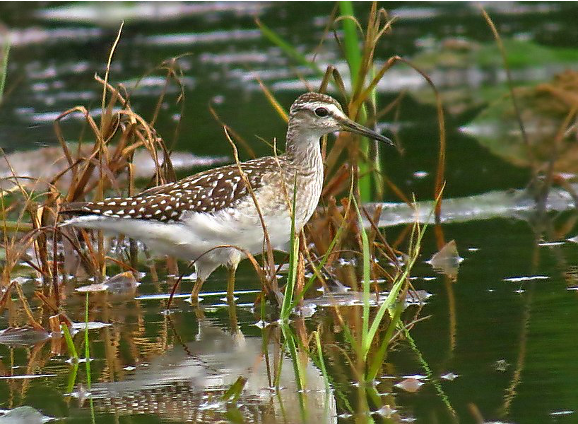
Wood Warbler
Latin Name
Phylloscopus sibilatrix
Status
Scarce Summer Visitor & Passage Migrant
Site And Records Information
Being in the right place and the right time is now key for Wood Warbler. Has bred along the Arne Road, Slepe Copse, Brownsea, Greenland’s Farm, Ridge Moors, Arne triangle, Stoats Wood near Canford Heath, Hartland Moor, Arne reserve and Studland…..but not recently! It is much more likely to be seen as a passage migrant, and has also been recorded at Ballard, Poole Park and Lytchett Bay. Spring birds begin to pass through in mid-April and have all gone through by early May. Autumn sightings are ver very rare and recently, there are now only 1-2 sightings per year!
Recent records
2023
1 on 16th May at Holton Lee
1 on 10th Aug at RSPB Arne
Woodchat Shrike
Latin Name
Lanius senator
Status
Vagrant
Site And Records Information
Woodchat Shrike occurs in Dorset almost annually, primarily as an overshooting spring migrant. There are 7 harbour records, 3 in the last 10 years.
1 on 21st Apr 1893 at Corfe Castle (Field 29th Apr1893)
1 on 31st May 1975 at Wytch
1 on 28th Jun 1981 at Arne
1 on 1st Jun 1982 on Ballard Down
1 on 18th May 2008 at East Holme (S.Robson et al)
1 on 28th May 2009 at Middlebere (G.J.Armstrong et al)
1 on 10th Apr 2011 at Lytchett Bay (D.Bandfield et al)
Woodcock
Latin Name
Scolopax rusticola
Status
Passage Migrant & Winter Visitor
Site And Records Information
Although a past breeder, no confirmed breeding sites have been found for a few years, but it is possible breeding birds could get missed. Like Nightjar in summer, these birds are easiest to see at dusk in the winter. Birds are frequently seen flying from the woodland at Soldiers Road, across the Arne road and out on to the Arne moors normally about 20 minutes before total darkness. Many of the woodland around the harbour supports Woodcock during the winter, and by standing of the edges of the woodland at dusk looking against the skyline will allow you to see the birds leaving daytime hiding spots and heading off to feed. During extreme cold weather the harbour can see Woodcock invasions, like in 2010 when birds were getting recorded on many country roadside verges at night literally dying to find food. During the 2013/14 winter period we conducted a winter Woodcock of Poole Harbour study which proved that an estimated c650 Woodcock over-winter within the Poole Harbour area each year.
Woodcook – Ringed at Sunnyside Farm – Paul Morton
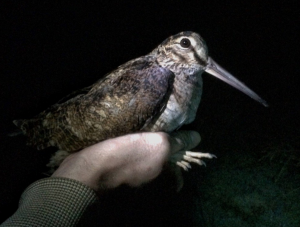
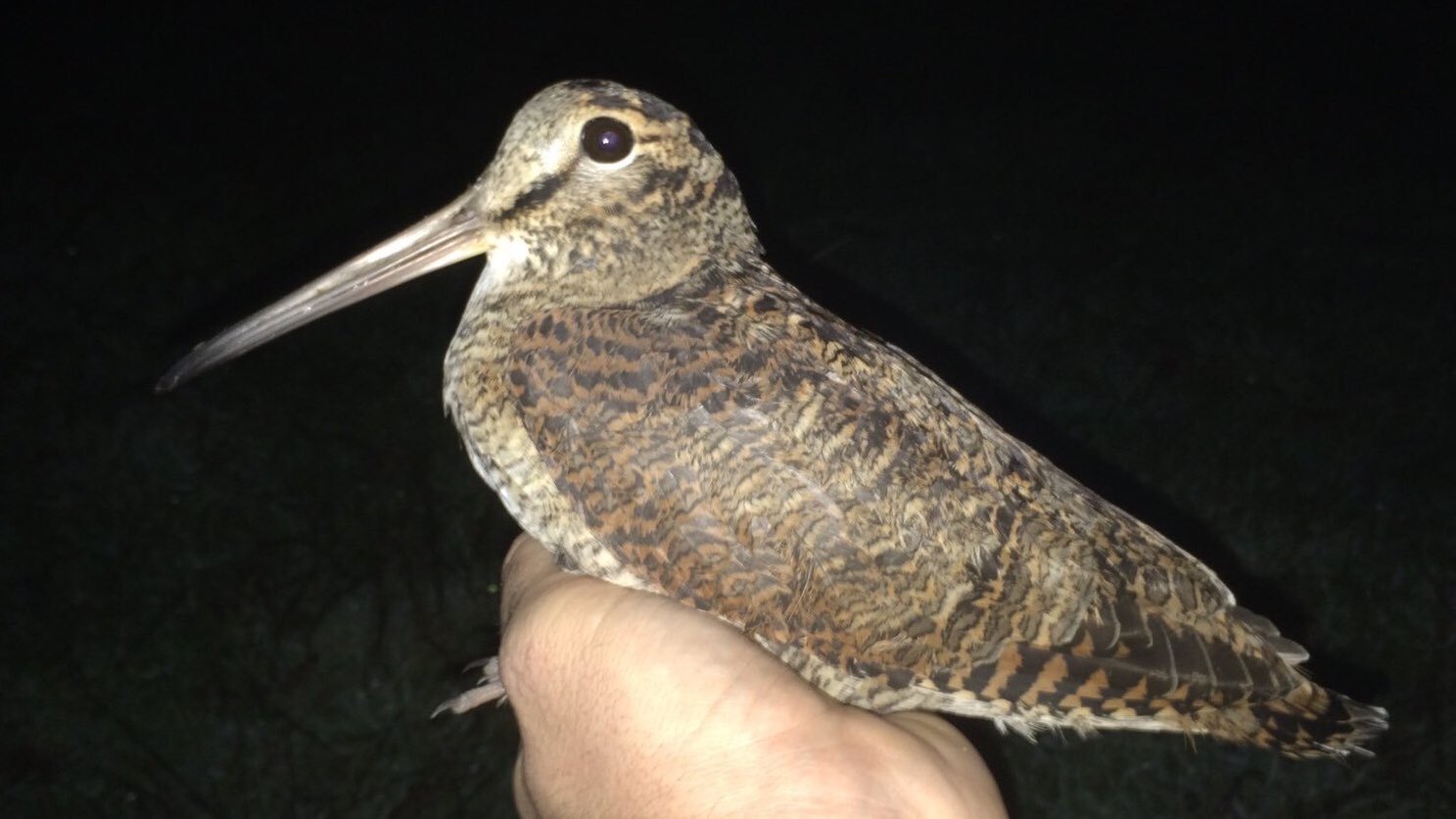
Woodlark
Latin Name
Lullula arborea
Status
Resident
Site And Records Information
Woodlark have become slightly easier to find in the harbour compared to 30 years ago as plenty of new suitable habitat becomes available due to conifer clearing work and heathland restoration projects. Birds start their stunning descending songs in early February and can be heard ringing out across many heathlands during the day and night at Arne, Stoborough, Grange, Studland, Holton Lee and Godlingston Heaths through March, April and May. On passage they can be seen during the ‘Vis Mig’ (Visible Migration) season passing over head at Glebelands, Ballard and North/South Haven. In 2011 up to four pairs bred at Arne with a post breeding flock of nine birds seen many times in the August. Post breeding flocks of 5-10 birds aren’t unusual around Hartland, Stoborough Heath and Soldiers Road. In 2019 a post breeding flock of 22 were found in fields at the Carey Secret Garden and in 2021 a full Dorset breeding survey was conducted which gave a total of 125 territories across the county.
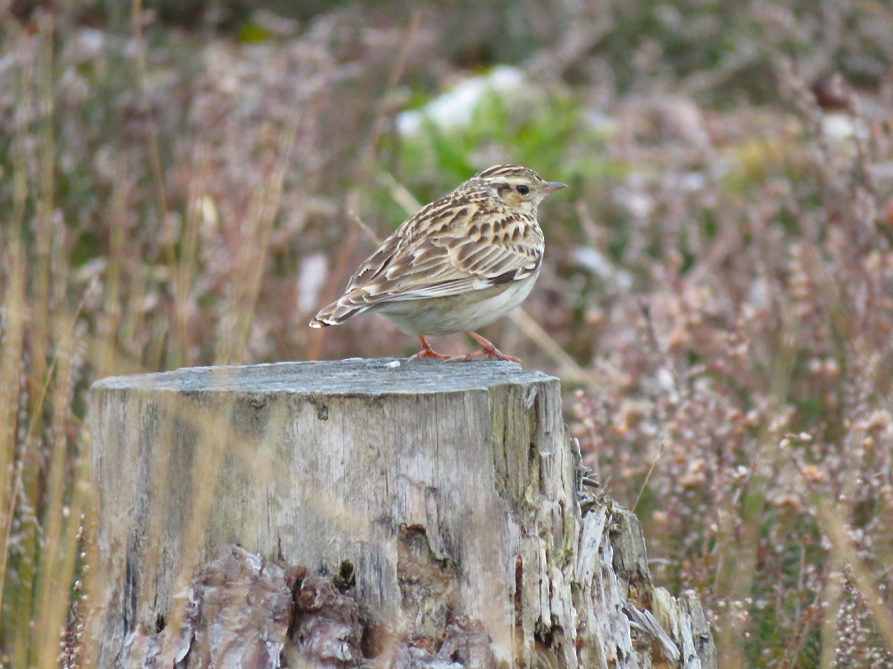
Woodpigeon
Latin Name
Columba palumbus
Status
Resident
Site And Records Information
Evident around the entire harbour, Woodpigeon is a bird you can’t fail to see. However, to make the most of these plump pigeons you may want to watch the mass Woodpigeon migration that takes place across the harbour usually in early November each year. A mind blowing 161,257 were counted flying across the harbour in just 5 hours on the morning of November the 7th 2010..
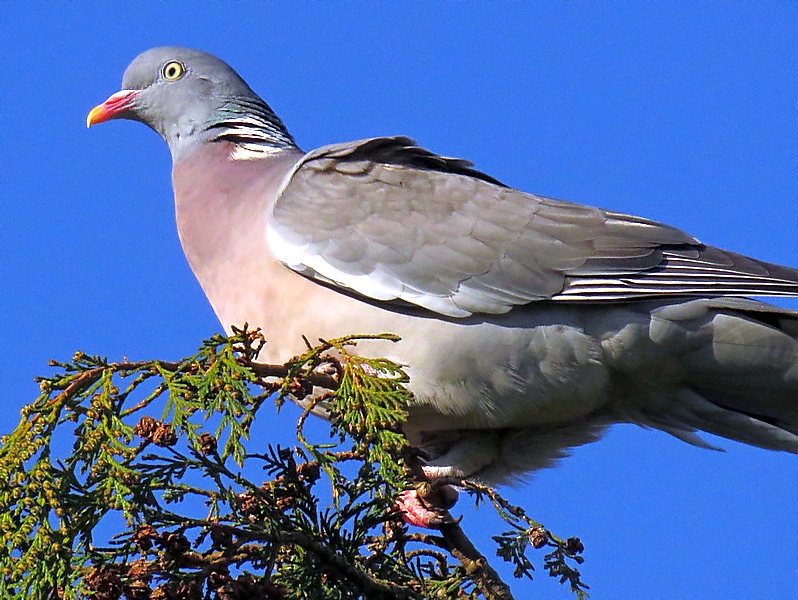
Wren
Latin Name
Troglodytes troglodytes
Status
Resident
Site And Records Information
An abundant species throughout the harbour found in any woodland, garden, scrub, heathland even reed bed habitat. High counts generally occur in winter, usually at roost sites, for example Studland has Dorsets highest count of 250 birds in the winter of 1987 and 300 birds in 1988.
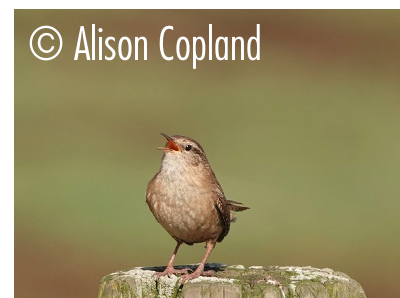
Wryneck
Latin Name
Jynx torquilla
Status
Scarce Passage Migrant
Site And Records Information
A much sought after bird to find on a fine autumn day. Records span right around the whole harbour from Upton Heath and Holes Bay, all the way through Sandford and Wareham to the heaths of Arne, Godlingston and Studland. The best months to track one down are August and September in any rough, scrubby area.
1 on 14th September 2008 on Ballard Down
1 on 10th September 2008 on Brownsea Island
1 on 14th September 2008 at Studland
1 on 8th September 2009 at little Sea Studland
1 from 4th – 5th September 2009 at Middlebere
1 on 22nd September 2009 at Upton
1 on 1st Sptember 2010 at Middlebere
1 from 24th – 30th August 2012 at Middlebere
1 on 11th September 2012 at Greenland Farm, Brands Bay
1 on 13th September 2012 on Brownsea Island
1 on 16th April 2015 at Lytchett Fields
1 on 30th August 2015 at Greenlands Farm, Studland
1 on 17th – 18th September at Middlebere
1 on 19th & 20th Sept 2016 on Coombe Heath, Arne
1 on 29th September 2016 in a Parkstone Garden, Poole (P.Derrick)
1 on 30th September 2016 at South Haven, Studland (G.Armstrong)
1 on 25th Aug 2019 – Lytchett Heath ringed during a ringing session (T.Elborn, S.Robson et al)
1 on 26th Aug 2019 at Ballard Down/Ulwell (B.Edge)
1 on 27th Aug 2019 at Hydes Heath, Arne (M.Parker)
1 on 6th September at Lytchett Fields 2019 (P.Morton)
1 on 14th September 2020 on Coombe Heath Raptor trail (A.Hirst)
1 on 27th April 2021 at Lytchett Fields SANG
1 on 27th Sep and 1 on 5th Oct 2023 on Godlingston Heath
1 on 12th Sep 2023 on Hartland Moor
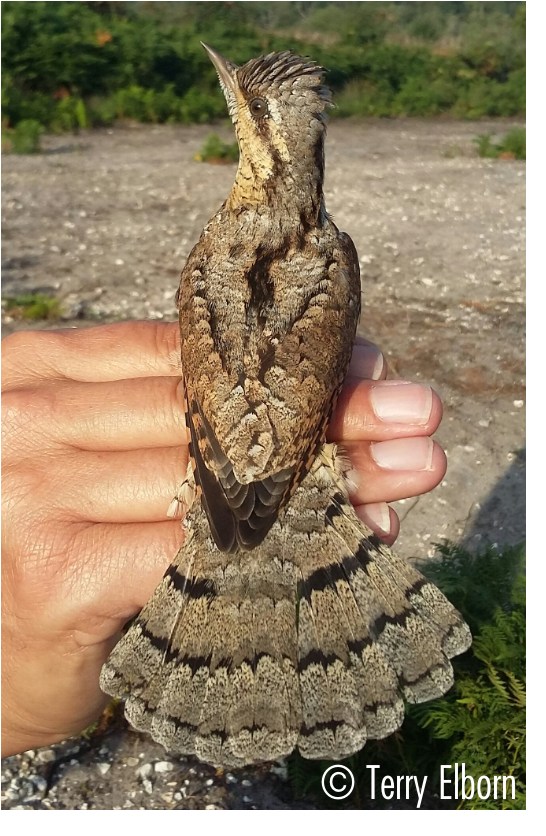
Call 01202 641 003
© 2025 Birds of Poole Harbour Registered Charity No. 1152615

